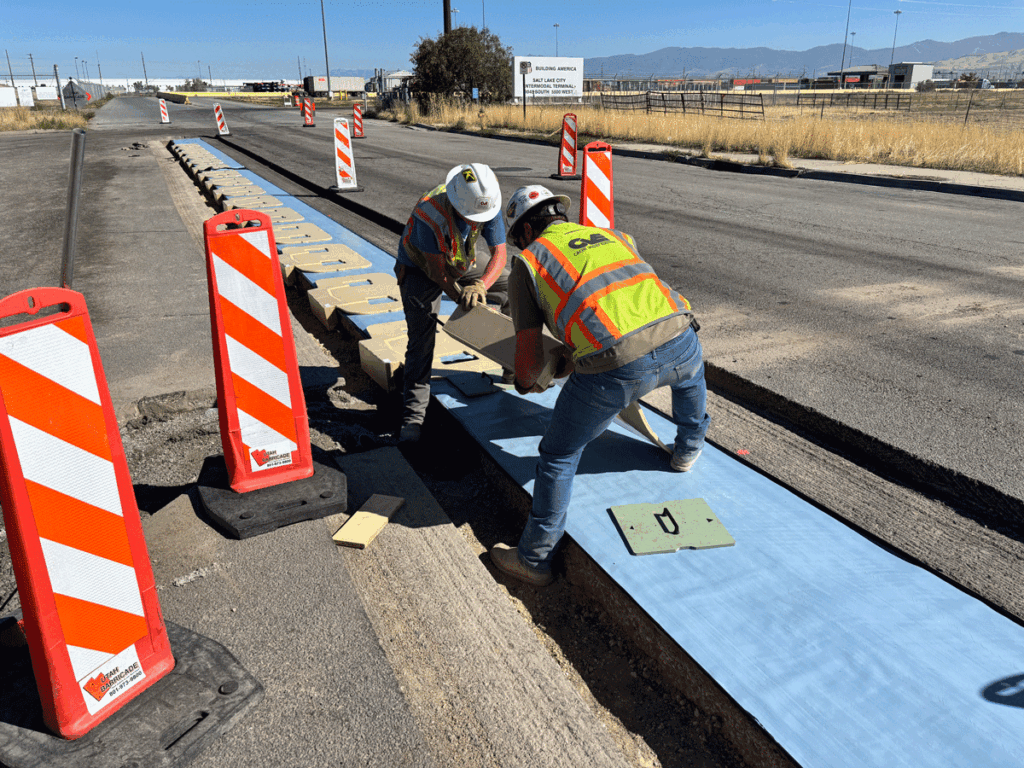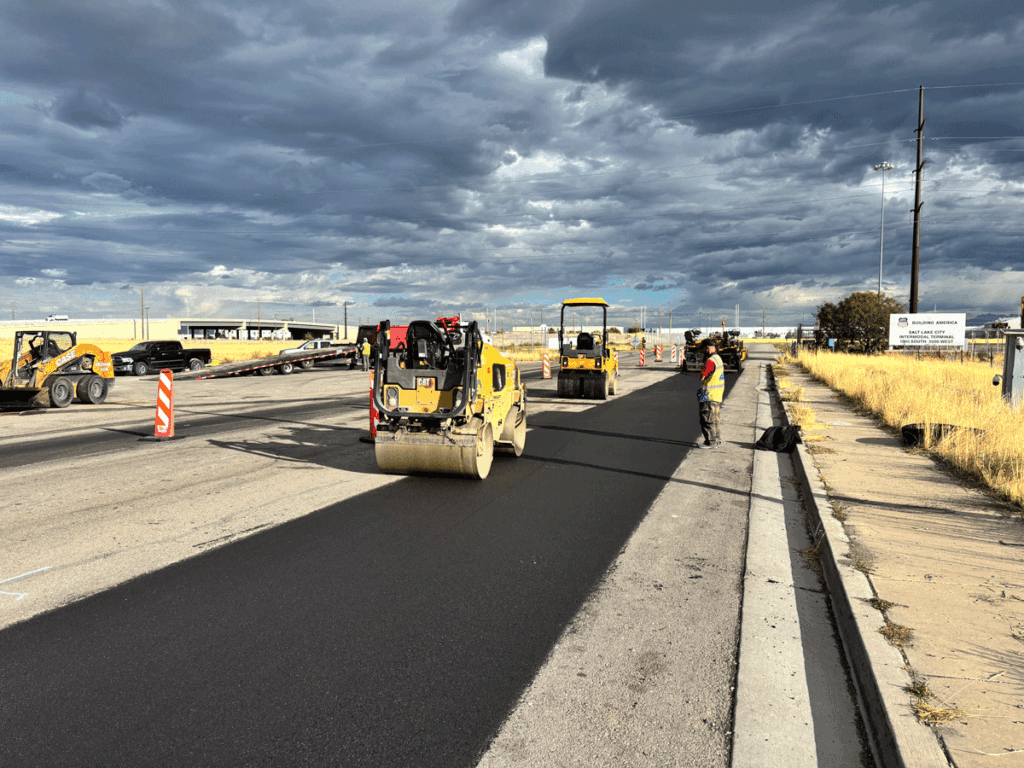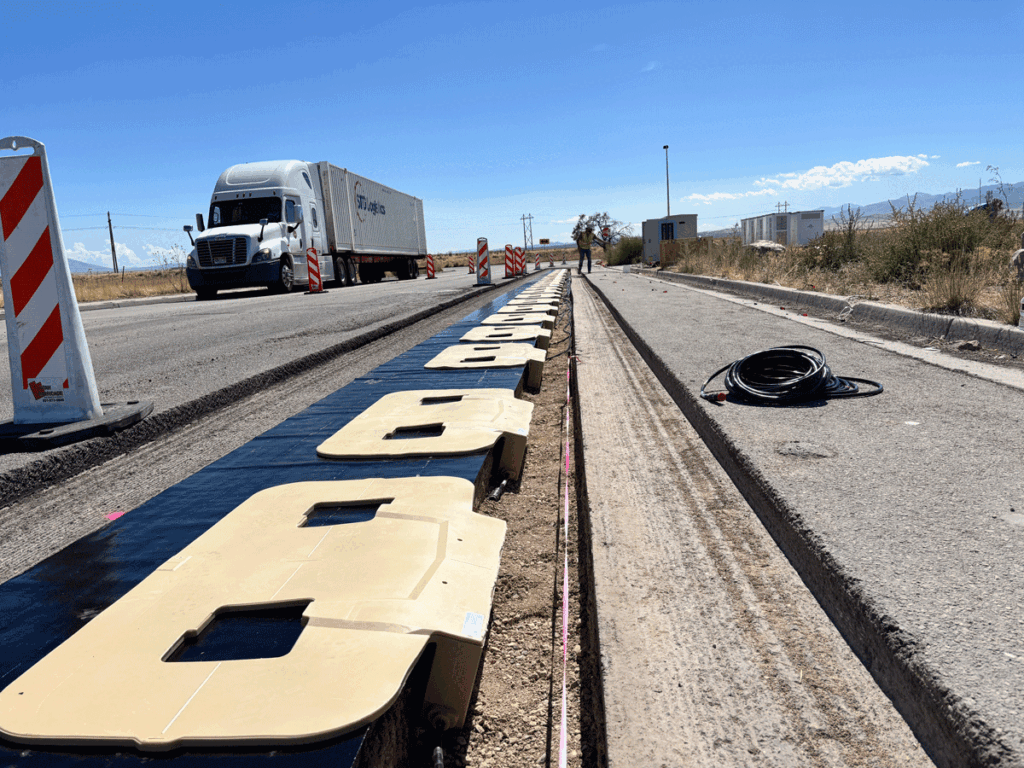Standardized WPT Testing: Creating Universal Functionality

With ASPIRE taking the lead with the installation of wireless power transfer (WPT) and dynamic wireless power transfer (DWPT) systems that allow electric vehicles to charge as they drive, there is a need to ensure that these various systems are interoperable. This autumn, ASPIRE and other industry partners’ WPT systems are undergoing standardization testing (see J2954/2 WPT standards and J2954/3 DWPT standards).
“This SAE testing will help this technology begin to be categorized, documented, and coded like other utilities that have been used by the public for many years,” said ASPIRE’s Senior Project Coordinator Tyler Munk. “This will also help guide future WPT design to better align with one another and support the effort of creating universal functionality between the systems.”
The overarching goal of the SAE testing is to ensure interoperable, safe, and efficient wireless in-motion charging that is available for light-, medium-, and heavy-duty vehicles. The testing removes compatibility issues, sets limits on electromagnetic interference and exposure to ensure widespread safety, and defines baseline efficiency and power transfer levels to improve charging reliability across vehicles.

ASPIRE’s Electric Roadway & Vehicle (EVR) facility has undergone construction in order to provide a testing ground of various DWPT technologies. In the months of October and November, four SAE partners, three at the EVR and one at the Utah Inland Port, will be on the track testing and validating the various systems.
On September 29, the first of these systems — the 200kW ENRX system installed at the EVR — was tested. Then beginning on October 6, the next DWPT system was tested — which was created by Honda — was installed for testing.
“ASPIRE provided the facility and electrical infrastructure to facilitate the testing,” said ASPIRE Program Director Dustin Maughan. “Honda did their own vehicle integration and DWPT innovation.”
After this testing has been completed, the ASPIRE Purdue system, a 200kW system, will be tested beginning on November 3. This system is nearly identical to the INDOT pilot on U.S. 231/52 in Indiana but slightly adapted to collaborate with another industry partner. “The plan for Purdue after SAE testing is to install concrete pavers over the system. This will double this research up with our Concrete Masonry & Hardscapes Association (CMHA) Project where we need to install pavers over a live WPT system,” Munk said. “This is why we installed the Purdue system in a sand base because that allows us to lower and raise the coils whenever we need for varying installations depths and styles.”

After wrapping up testing at the EVR, the SAE testing team will then move down to the Utah Inland Port, where they will test the Electreon system beginning November 10. This ~100KW system, built by Electreon, an ASPIRE Industry and Innovation Board (IIB) member, is conveniently located on a quarter mile section of the public ingress/egress road to the Union Pacific Roadway — a route highly trafficked by freight vehicles.
“The installation and SAE testing at the Utah Inland Port is critical because Utah stands in a position where electrified freight can have a significant impact, but freight companies are hesitant to make that change without existing infrastructure for charging medium- and heavy-duty vehicles,” Maughan said. “On the other hand, providers are hesitant to invest the significant funds to install the WPT infrastructure without electrified freight to use it.”
This is where ASPIRE comes in and helps to address these gaps.
“ASPIRE, as a non-profit research organization, is well positioned with its stakeholders and its network of connections to facilitate the charging infrastructure and the conversion of diesel internal combustion engine vehicles to battery electric,” Maughan explained. “This lowers the cost bar for the conversion of fleets to electric trucks.”
The SAE testing is another important step towards an electrified future. For more information about SAE testing or to get involved with the groundbreaking research at ASPIRE, contact Dustin Maughan.
About ASPIRE & Utah Electrification:
Headquartered at Utah State University, ASPIRE is a National Science Foundation Engineering Research Center. ASPIRE has demonstrated expertise in developing, implementing, and managing a range of electric vehicle (EV) infrastructure projects and fostering strong partnerships across the EV charging ecosystem. The center integrates multidisciplinary expertise across electrical, civil, and mechanical engineering, as well as economics, social sciences, and policy. In 2023, ASPIRE was designated the lead institution in building Utah’s Intelligent Electrified Transportation Plan. More information on the center can be found at aspire.usu.edu, and more on Utah’s electrification efforts can be found at utahelectrification.com.
Contacts:
Dustin Maughan
Program Director
ASPIRE ERC
Writer:
Kayleigh Kearsley
Marketing & Communications Intern
ASPIRE ERC